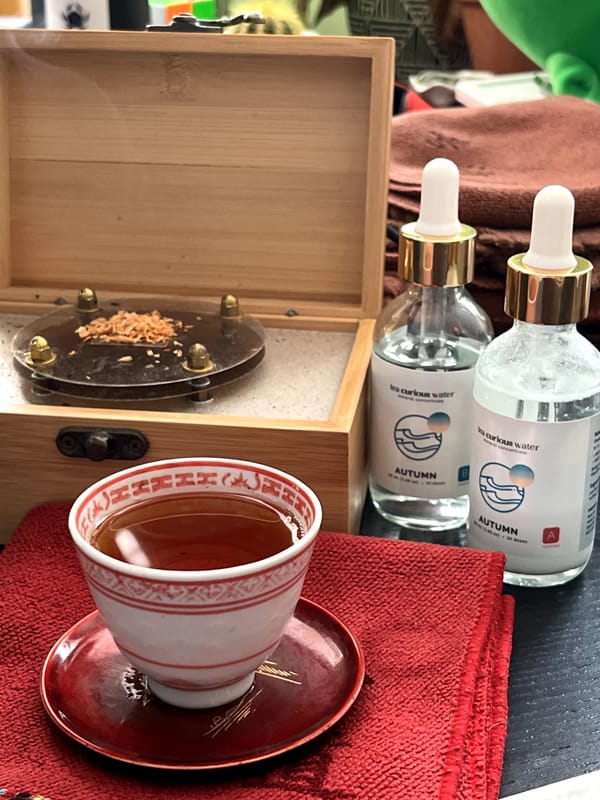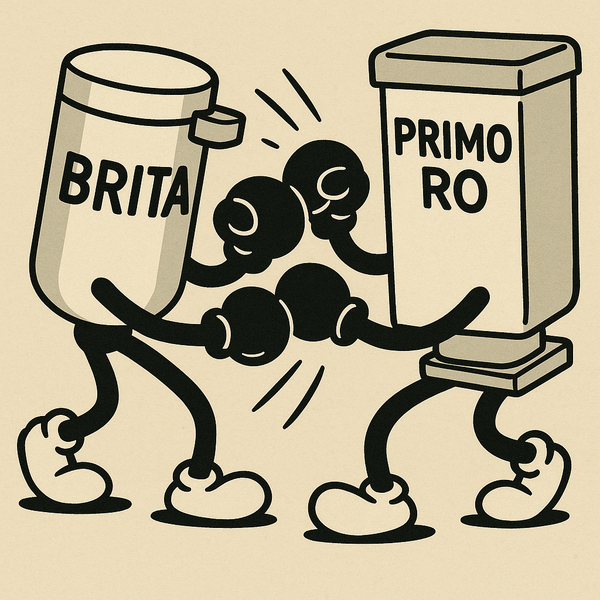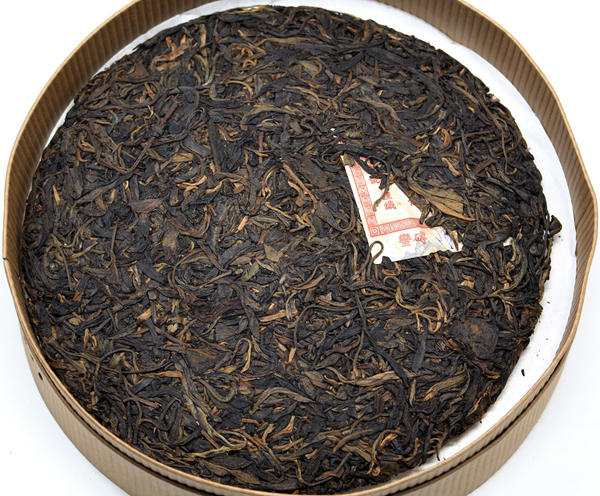Water Woes - Update 3; A Corner Turned?
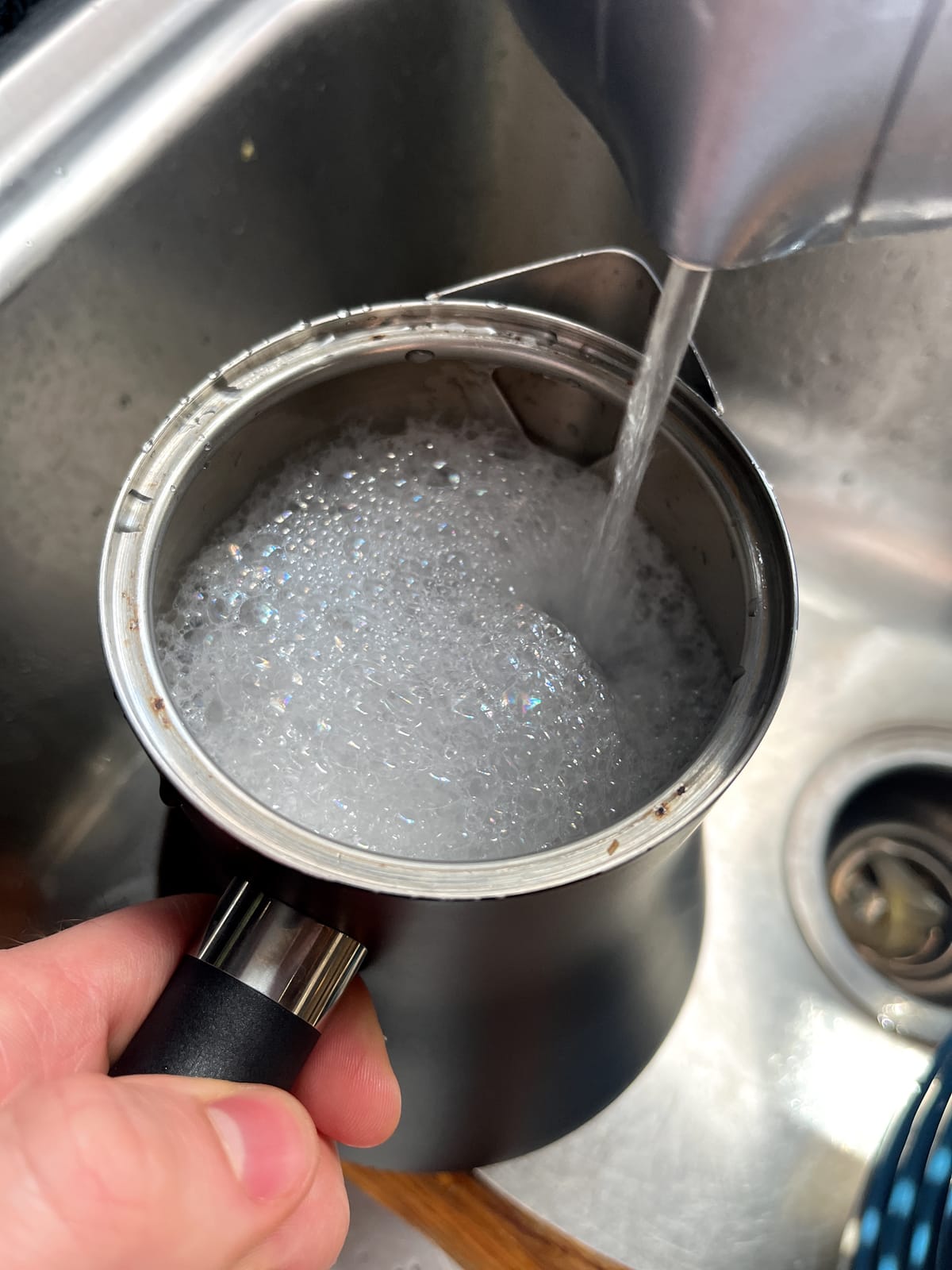
OK! This one is gonna be pretty comprehensive, not massive, about 2,000 words.
So, status update:
- Been, what; a month and a half?
- Bad tea the whole time, just sorta stopped drinking it.
- Not just 'subpar', but genuinely not good in some cases.
- Most recent tasting (03 CYH Manzhuan, see below) was decent but heavily skewed / altered from what I recall / expect out of it.
Where do we go from here?
Enter: Kettle Descaling
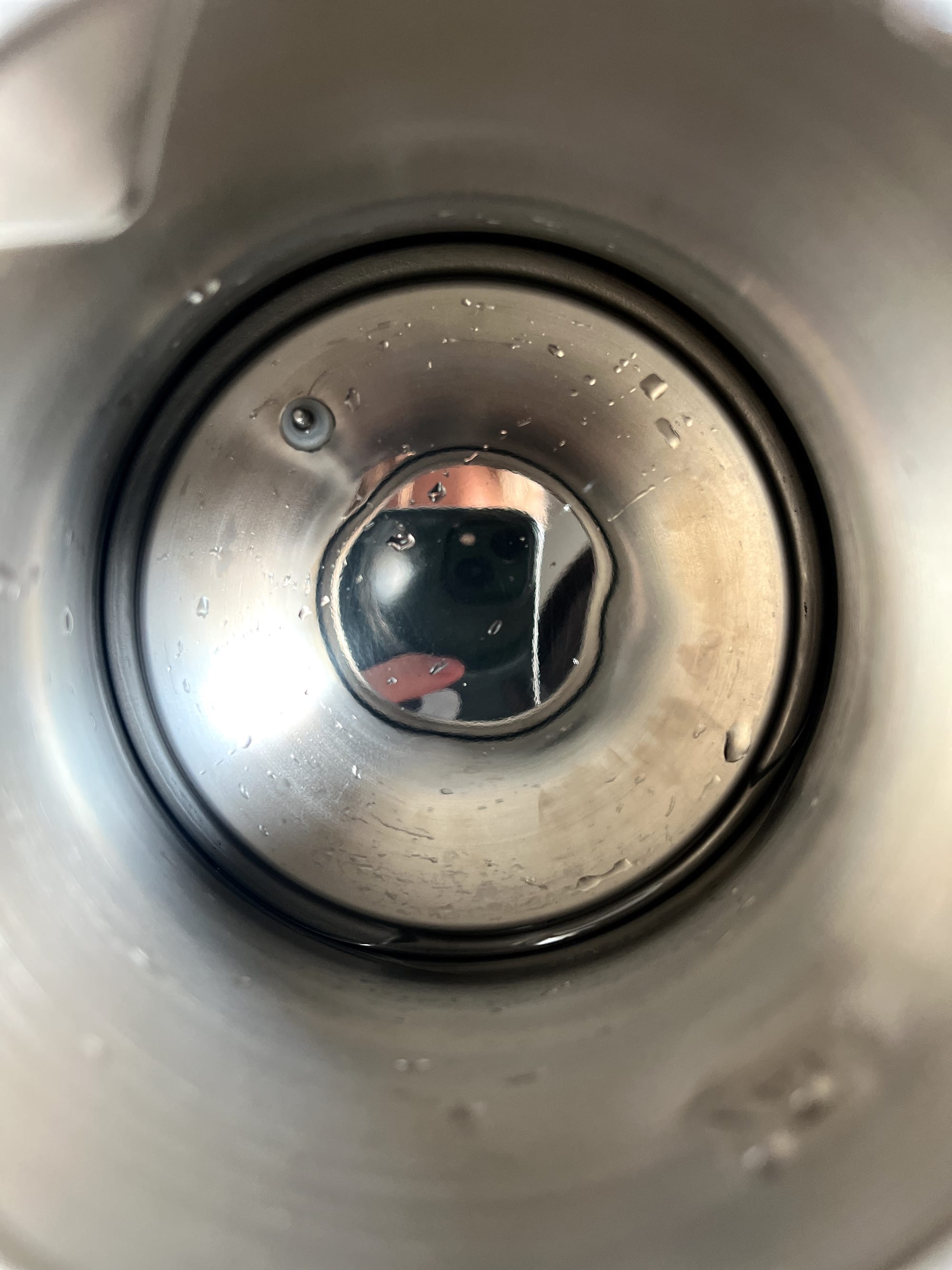
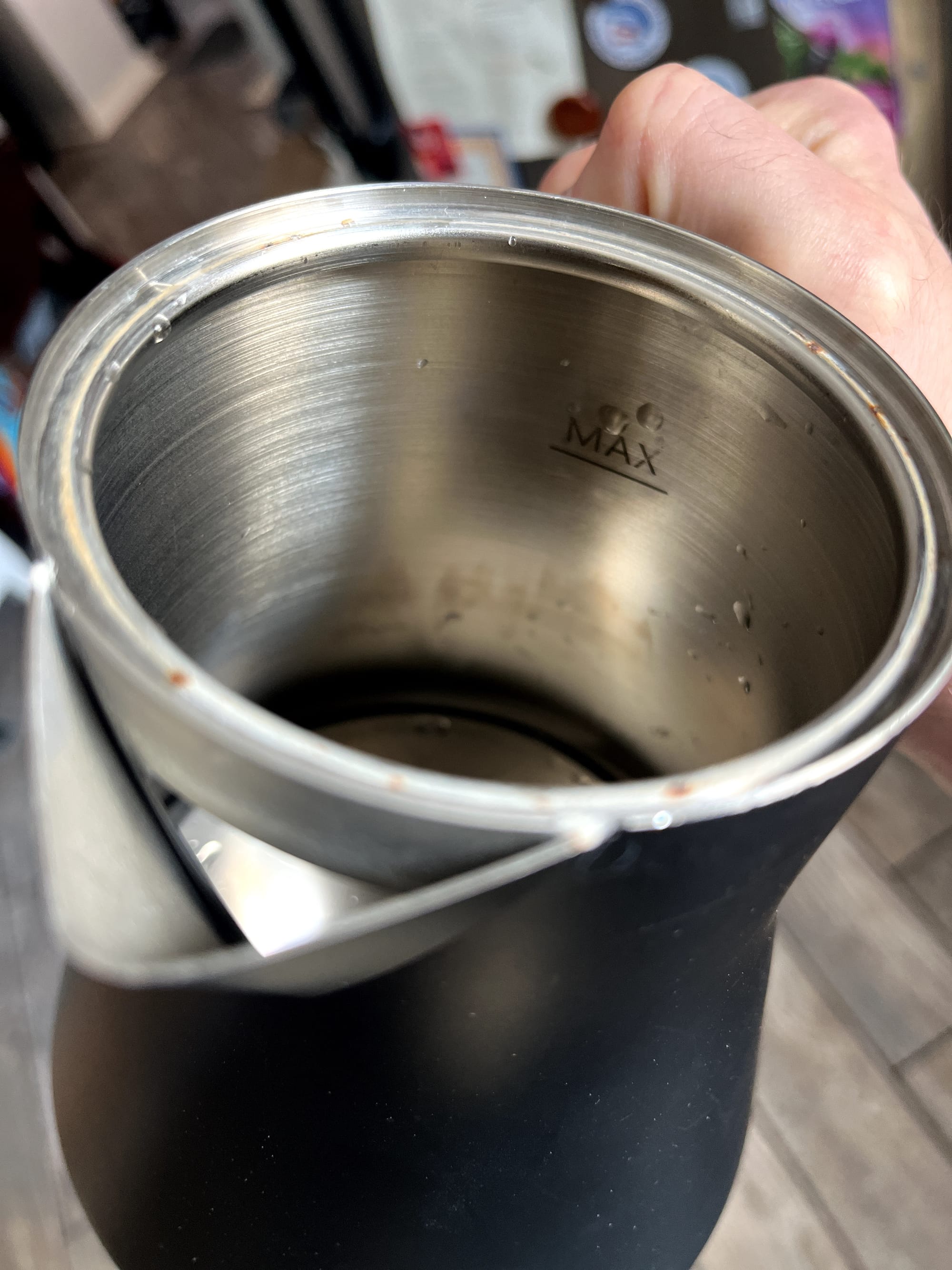
I know what you're likely thinking
"That kettle is completely clean, there's no scale even in there, why clean it?"
I'm with you, and Phyllsheng and I literally just had this same dialogue before conducting this whole endeavor, about an hour ago.
Here's my hypothesis, and wouldn't it be neat if it was right?
The act of descaling a kettle is to reset the imparting effect of mineral buildup inside to null, or, at least as close to baseline as possible; much like resetting a ghosted tobacco pipe, smelling some coffee beans between enjoying fragrances and perfumes, or cleansing a palate with pickled ginger between bites of sushi.
I realize that's not fully accurate, just go with it.
What if: Mineral buildup in a manner and to a level that significantly (likely negatively) influences the taste of water boiled for making tea - was possible not only in a solid state (i.e. visible deposits resulting in scale); but ALSO possible in a semi-gaseous form of the mineral 'bonding' with the metal body of a kettle itself. This resulting in something that would almost appear a stain or residue, but one that cannot be scrubbed off or gotten rid of with the boiling deep clean of a vinegar solution?
I already tried to reset this kettle to no avail.
- I have tried deep scrubbing.
- I have tried boiling vinegar (5% acetic acid) and water solution.
- I have tried boiling baking soda (sodium bicarbonate, mild abrasive) and water solution.
So, let's just try it; it's $10 for 2 bottles. That's 4 full kettle cleans, something that could be easily just a quarterly routine. If you have one kettle, that's a year for $10.
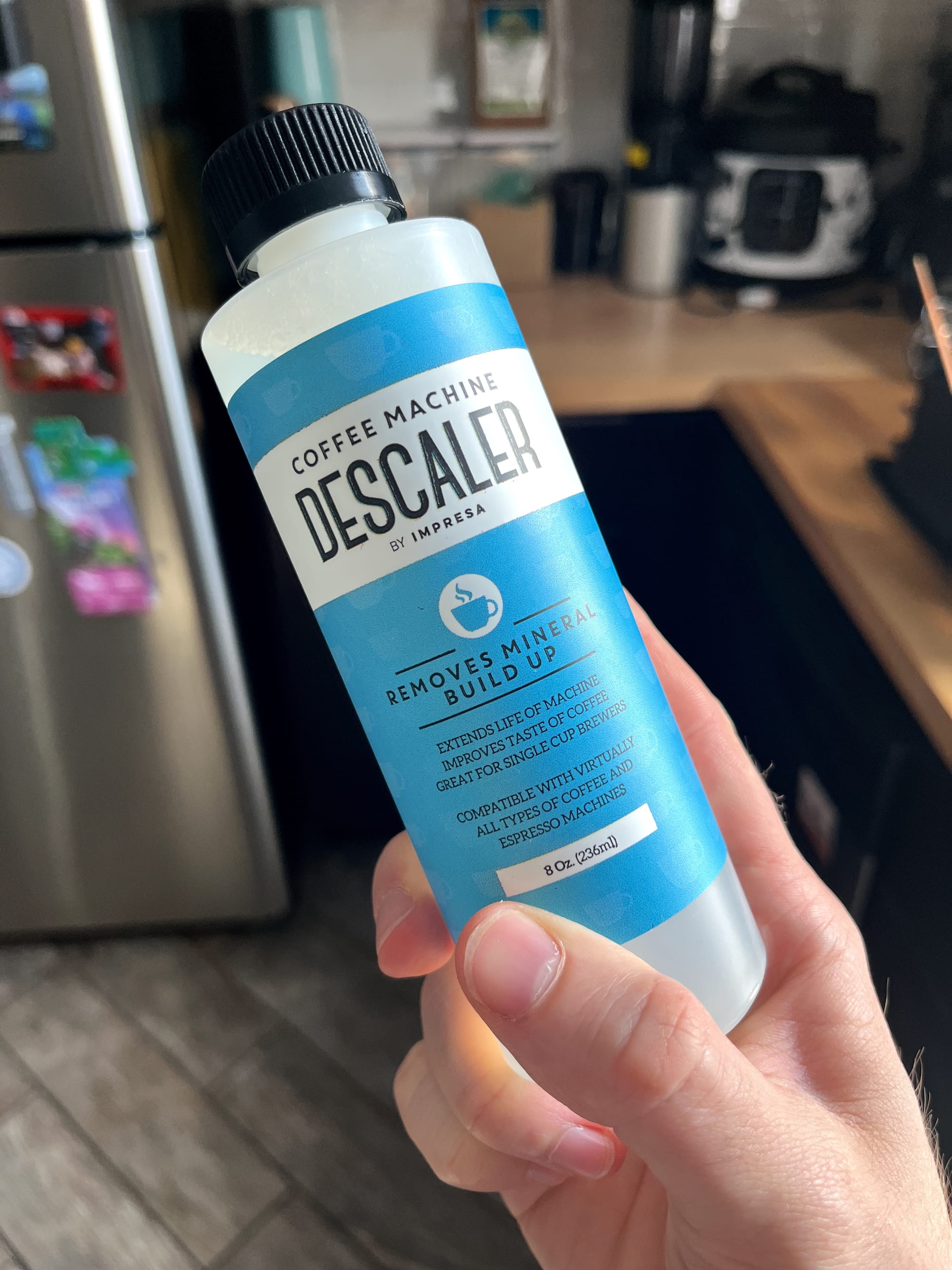
Half the bottle in the bottom, fill with filtered tap, bring to boil, let simmer 5 minutes or so.
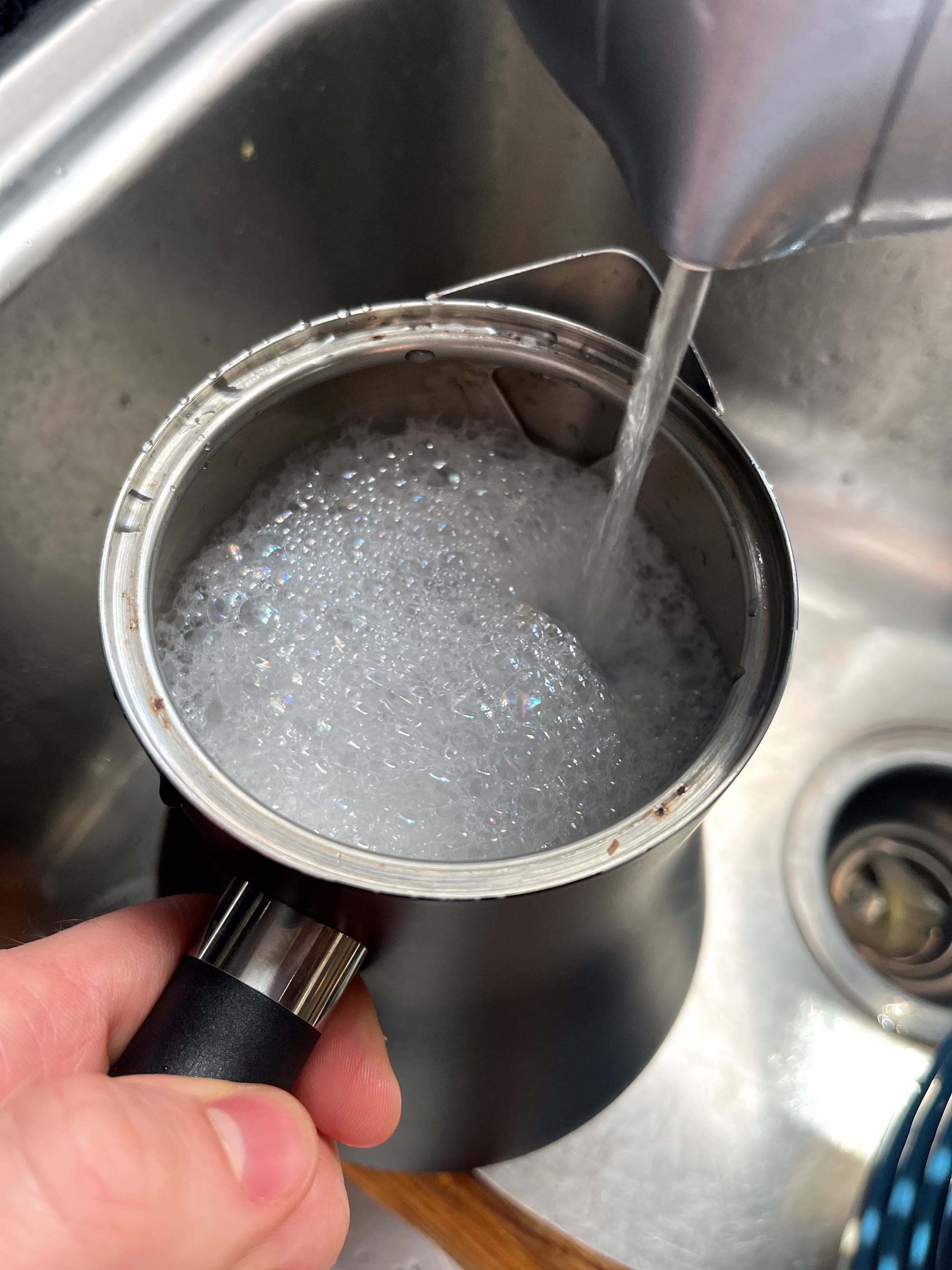
After 5 minutes, let's dump that out and keep on rollin'.
Now we're going to rinse 2 more times, filled all the way up with filtered tap, and dump those as well. Plus, a quick cold rinse for good measure.
Aaaand 20 minutes or so later, we're now here:
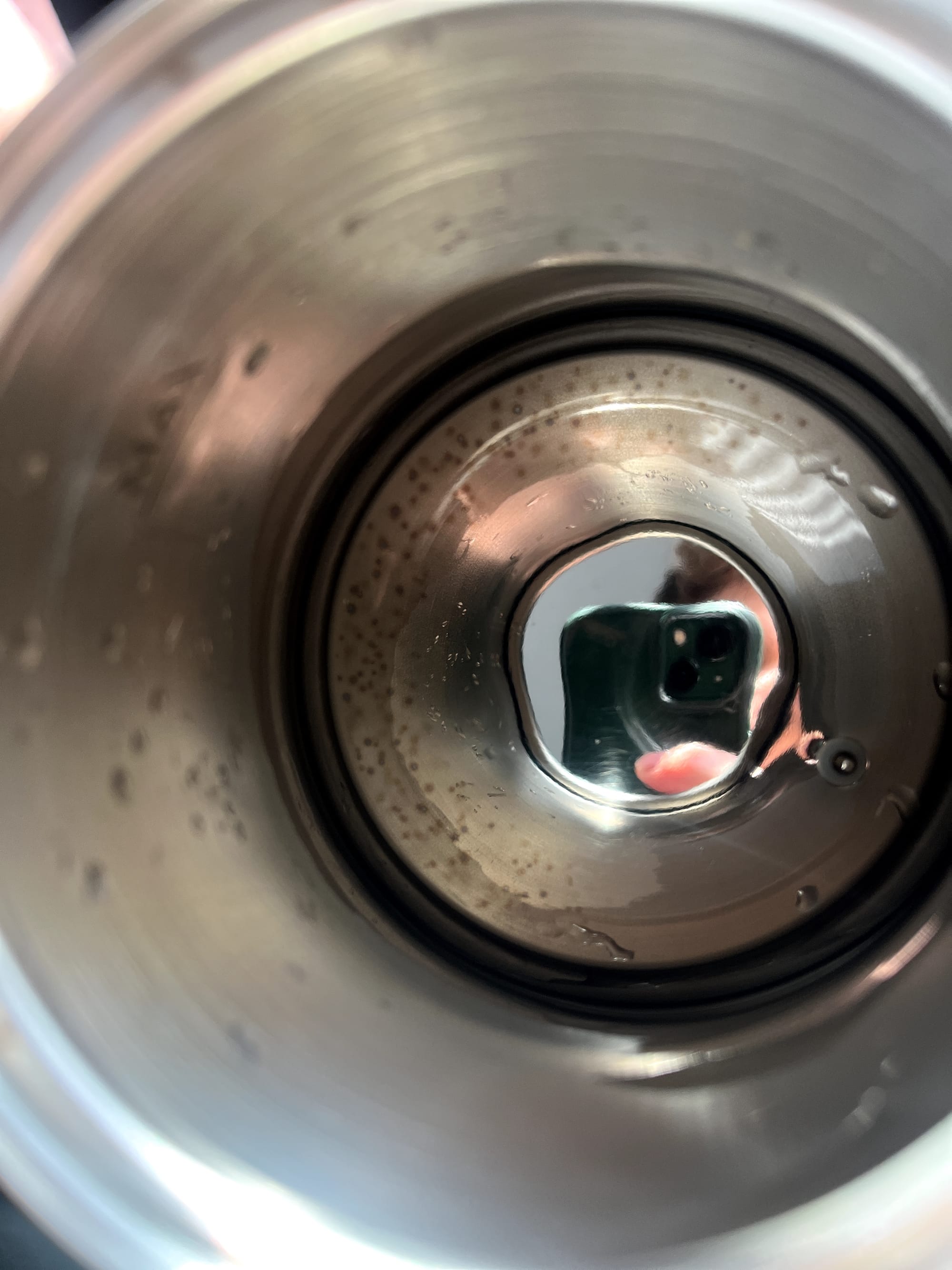
Isn't that amazing? After just 2 boils with filtered tap water (about TDS 157 at room temp), immediately dumped out, we're already forming scale.
Slightly agitating considering all the hoops we're jumping through, but at least it is the old looking scale I'm more accustomed to. I don't think you're often going to get a setup where you never get any scale to contend with.
Frankly, a bit from a good water with a good mineral balance could be a good thing for a while in small doses.
Now then, presently, here's where we're at:
- I have descaled the kettle.
- I have let it sit after 3 rinses for 20 minutes.
- I have a fully clean set of teaware.
- I am using a totally fresh batch of totally fresh Empirical Water Glacial exactly as I used to make it just a mere 2 months ago, in the same fashion as the entire last year of enjoyable tea.
- My taster is functioning normal from every measure of food, dessert, beverage, and nuances of other waters I can possibly tell.
- It has been many hours since I last smoked any pipe, and it was a very light, quick, and gentle blend.
- I have broken off 5-6g of 2008 Dayi 8582, gathered my teaware, boiled some water, and am ready to begin confirming some things.
I began by testing (tasting) JUST THE WATER, multiple times.
- Room temp: jug to cup
- Room temp: jug to gdb to cup
- Room temp: jug to pot to gbd to cup
- All normal, maybe a .5 out of 10 slightly chlorinated note present, likely the RO fill station, extremely minor lingering of the descaling solution after 2 boiling rinses and one cold rinse w/ filtered tap, OR the now present subtle ring of scale from boiling filtered tap...
This is not a science laboratory, I cannot control every fathomable thing and there is likely something specific wrong causing all this drama.
I then tasted JUST THE WATER again.
- Boiling temp: jug to cup
- Boiling temp: jug to gdb to cup
- Boiling temp: jug to pot to gbd to cup
- After letting cool slightly and giving the yixing time to sit with it for a few minutes: no appreciable difference. The water once heated, left in the pot, and poured of course delivers a slightly imparted flavor from all the desirable tea that has been through it, much like cast iron.
At this point, the only real sticker is the ever so faint chlorine type taste. It could be remnants of various things or indicators of various others, but I suspect likely the RO station changing or a faint descaler trace.
I have been describing the off tastes the last month as aluminum, magnesium, metally, electric, etc - to attempt to encompass the odd flavor and sensation combo that has been present and certainly was the day I threw unseasoned, never used kettle stones in there.
None of that is particularly detectable.
So far, so good. Now the real test.
Let's Steep
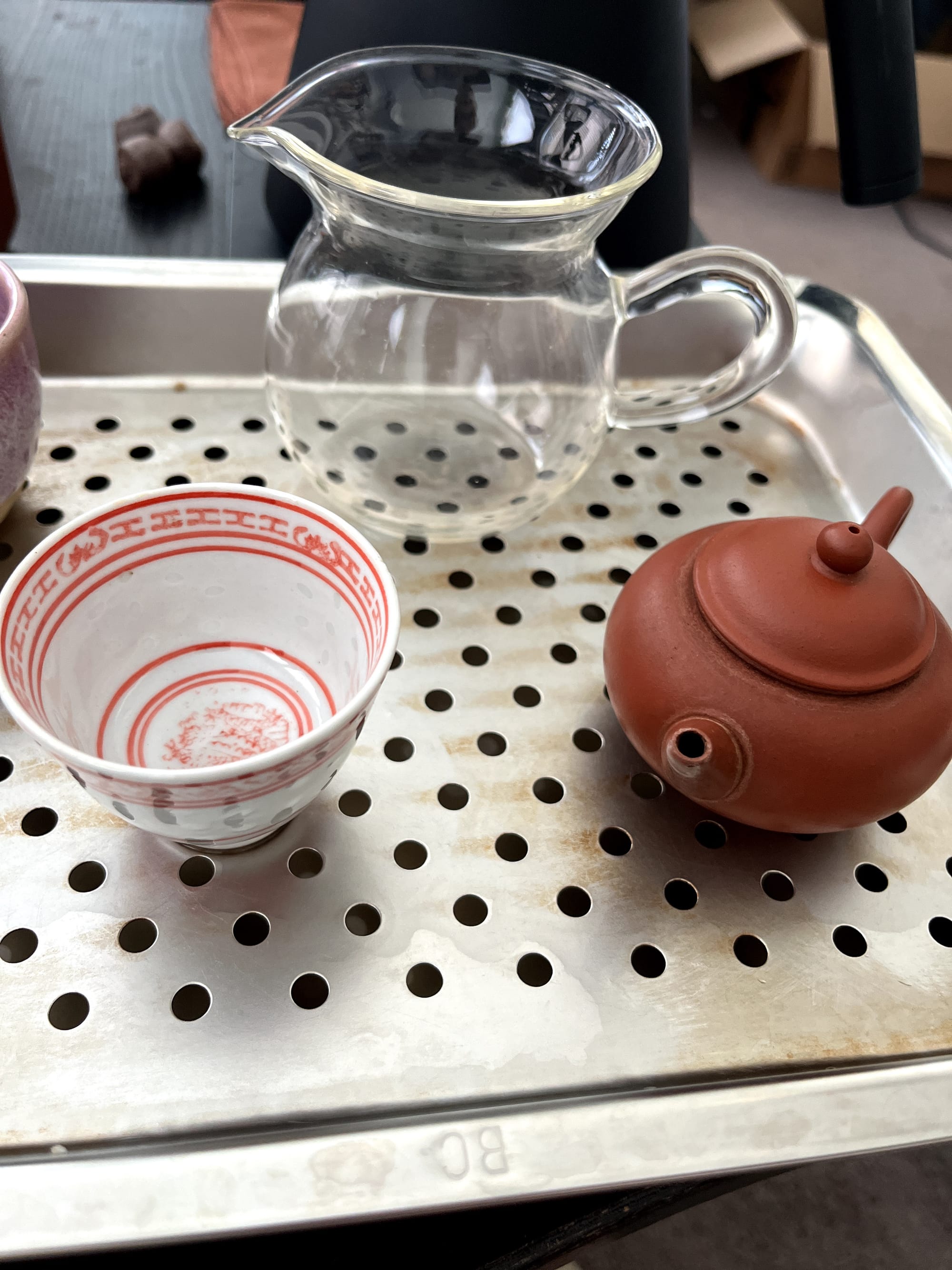
Not doing a whole tasting right now, so don't expect thorough notes. I am intimately familiar with this tea. It was my first ever true benchmark tea and I have tested with it extensively for over 5 years.
"Ok so it smells like 8582."
"That's promising" Rachel says in support from stage right.
Sometimes wacky water can actually sway the very smell of even just the leaf in the pot. Different waters heated, even room temp at times, WILL smell differently due to trace mineral, chemical, or pH.
I know, we're super niche right now. Let's keep going.
Steep 1:
"Smells good." says Rachel.
The texture is there. The taste is...neither here nor there yet, it's steep 1. It's fine though, ish.
"What do you think?" says Snoot.
"What do you think?" says Rachel.
"Let's keep it quiet til steep 3."
We both nod.
Steep 2:
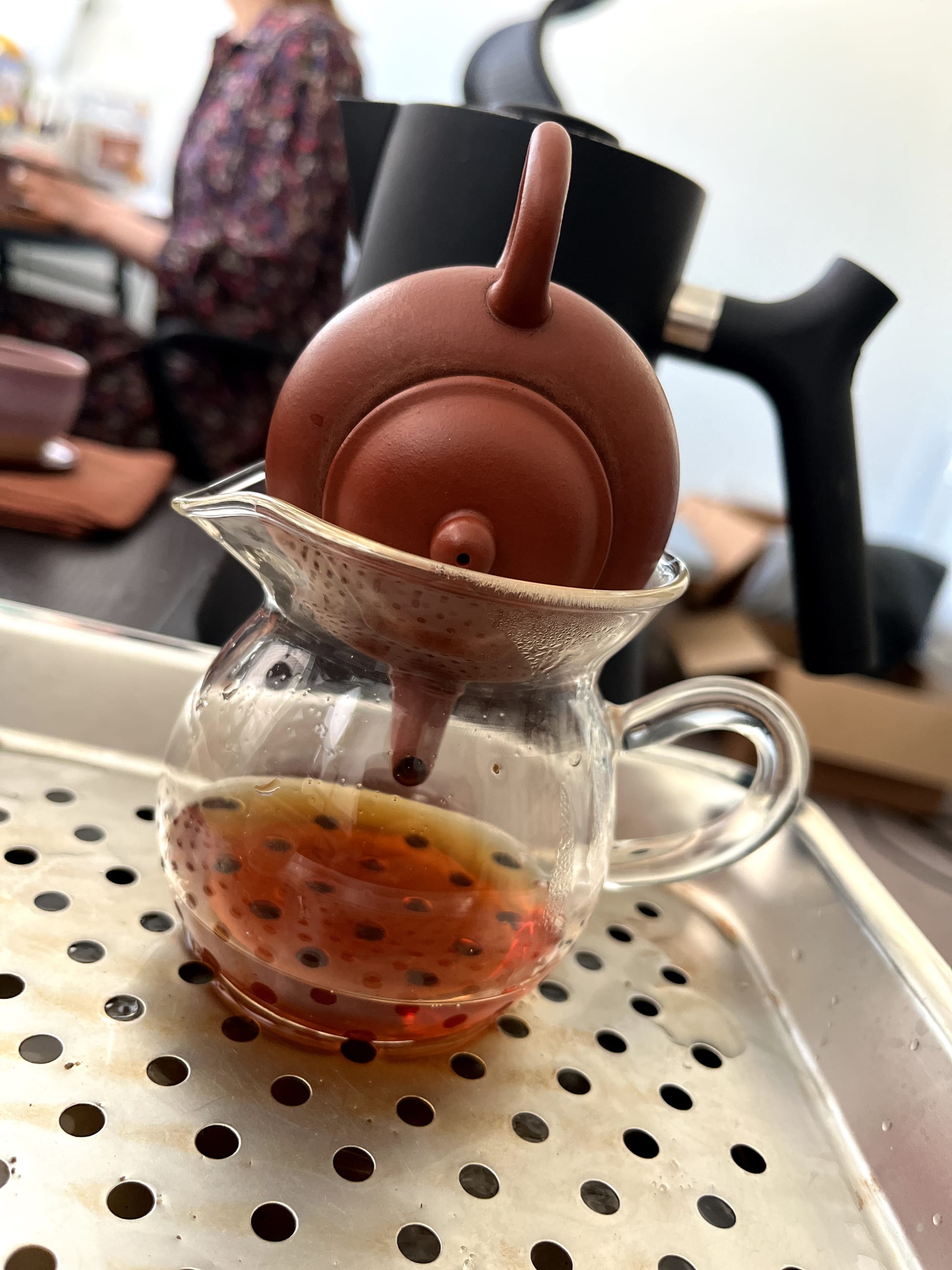
An adorable, slightly rotund Dachshund walks by with a tongue hanging out indicating simultaneous delight and overheating.
Texture, is, there. Aroma seems there. Taste...
Not half bad. Alright, we might be in business, treading cautiously now; don't want to get overzealous.
Steep 3:
"Alright, here we go" says Snoot.
sips methodically, meditatively, probingly
"What do you think?" says Snoot.
"I don't know how much to trust my taste, but I think it tastes pretty normal at least. I don't taste any offensive things." says Rachel.
"I think I agree, barring that ever so slight chlorine-esq / adjacent thing" says Snoot.
Praise the Lord, I think we have made a discovery.
LADIE AND GENTLE SNOOTS, I THINK WE HAVE REACHED EUREKA!
This is...semi-novel, or at least unexperienced and presently unheard of to me, which I am glad for; as I would not have been super fond of the alternative remaining solutions for the quandry.
Current Conclusions
The RO fill station may have a slight change in it's chemical nature, not been cleaned enough recently, been cleaned too much, etc...
Or, as Wooju points out, a possible alteration in quality could be present simply with the coming of peak summer heat and the water sitting in and passing through whatever vessels and conduits it takes to make it to a jug at the store; even though I bring my own to fill in.
Yet, that does not seem to have had a pronounced negative effect. What, rather, has: appears to have genuinely been from the kettle stones (at least in this particular kettle, the only one that had them used).
I invite you to recall from my prior article on the early ramifications of their use. Perhaps the upper rim of the kettle with suspected iron deposits from steam trapped after a mere 24-48 hours of use:
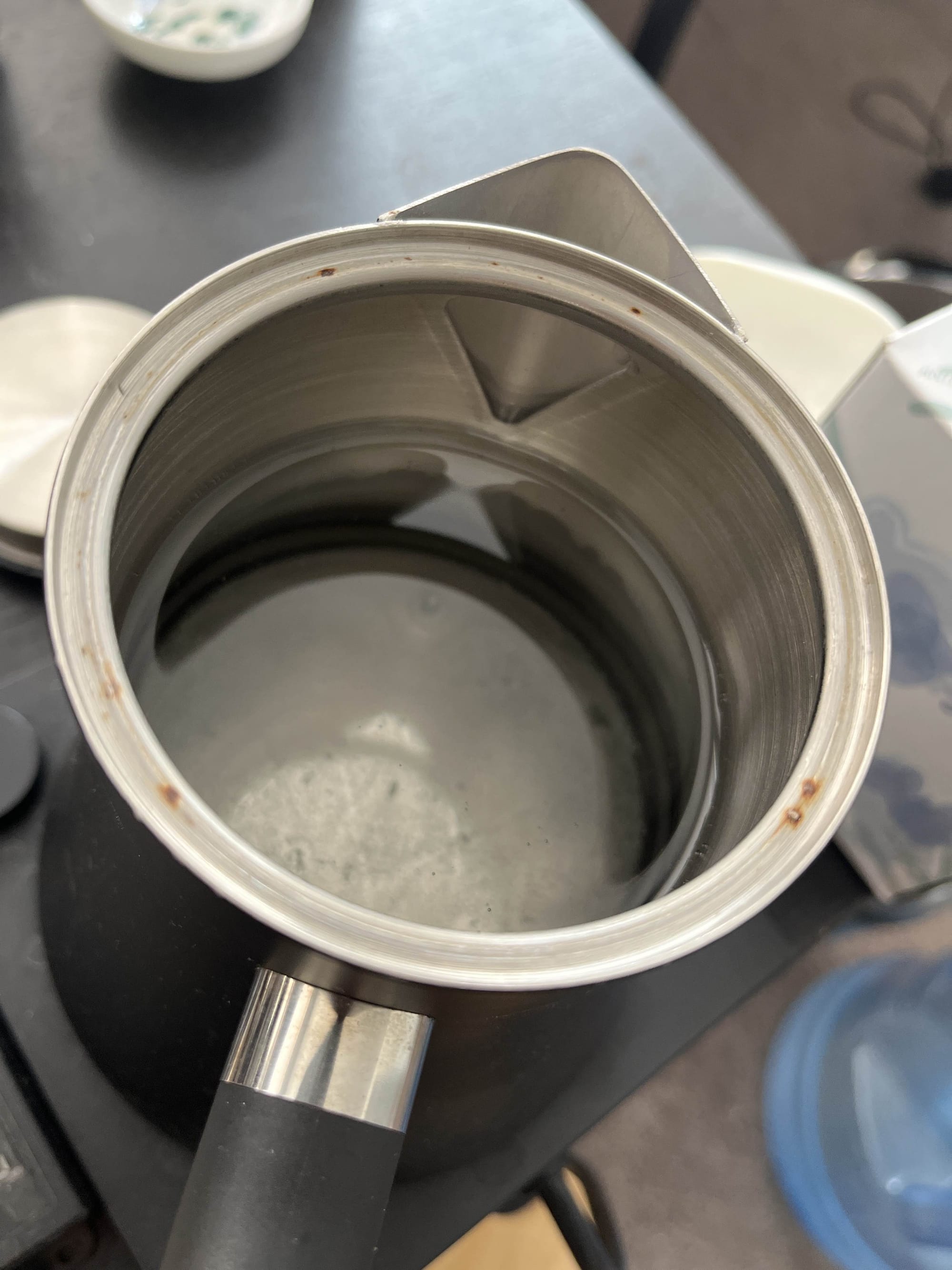
Does it not look a similar shade to the brownish discoloration on the inside wall as shown in the pictures earlier?
I for one, think it does. Here is what I believe occurred:
You ready to meet Super Nerd Snoot?
The events as I see them:
- I'm having good tea, existing as usual.
- I throw the kettle stones in mid session and everything goes wack haywire from that moment all the way to now writing this article.
- I stammer around trying to fix the issue and write a few articles in the process.
- A month and a half passes, we come to today.
- I'm eliminating as many variables as possible and trying to think of ways this could be solved.
- I try the descaler solution, it all but fixes the problem and tea is good again, if with a very tiny residual off taste somewhere that becomes not super noticeable as the session goes on and won't bother me anywhere near how I was being bothered before.
- 8582 tastes more or less as it should. All is right in the world.
What happened? You know that hypothesis I had from earlier? Well, while I'm not a scientist or a proper chemist, here's what happened. If you are that person, feel free to expound and correct my terminology.
- Mineral (iron, aluminum, both, others, idk, don't care anymore) built up rapidly in the kettle from the stones being included that day I threw them in mid-session to see what would happen.
- It 'off-gassed' and metallurgically bonded to the interior floor and wall of the stainless steel itself through a process called adsorption (not absorption).
- This left passivation layer corruption, where the protective metal oxide layer got physically contaminated.
- Inter-metallic compound formation occurred, in which the minerals chemically bonded with that stainless steel interior.
This was literally surface metallurgy alteration. The metal surface chemistry physically changed at a molecular level.
Let that sink in.
As we continue to drink through this session of 8582 while finishing up the article, a Rachel statement enters my ears - unprovoked - while she sips and looks ponderingly at her cup.
"Yeah, even sometimes you would pour tea for me recently and it tasted really off to me. This may not be perfect, but I'm struggling to figure out what is obvious or glaring from what it was before."
This further confirms to me:
I am not crazy. I might be obsessive, but I am not; crazy.
I am finding myself on roughly steep 6-7 gravitating for more steeps reflexively again.
The balance has been restored, at least, sufficiently for the time.
Oh, and shout out to Koume who, was correct in his recommendation to use citric acid powder to form a solution to boil in the kettle instead of vinegar; because citric acid is stronger and would have a deeper penetration than the acetic acid from the vinegar. That likely also would have worked. So kudos to Koume 😀
Expect a retaste of the 2003 Chen Yuan Hao Manzhuan and a comparison entry in that article from the still wacky water that I managed to make somewhat better but not fully corrected.
Enjoyment and study of tea can now continue. And so it shall.


